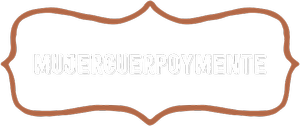Mastering the art of whistling is a fascinating journey that involves precision, practice, and passion. This unique skill, which can be considered as a form of musical expression, is not as simple as it appears. To become adept at whistling, one must first understand the basic mechanism. It involves the flow of air directed by the tongue against the roof of the mouth, teeth or lips, producing a specific sound. The variation in pitch and tone depends on the positioning of the tongue, the shape of the mouth, and the amount of air expelled. A mastery of these elements can lead to a wide range of whistling styles, from the simple puckered lips whistling to the more complex finger and palate whistling.
To achieve this, consistent practice is key. Much like any other skill, the more one practices, the better one becomes. Start with simple tunes and gradually move to more complex melodies. Remember, precision is crucial, so it’s essential to learn to control the airflow and tongue position to hit the right notes. It’s also important to keep in mind that each individual has a unique whistle sound. This is due to the differences in our oral cavities, which affect the pitch, volume, and timbre of the sound produced. Therefore, embracing your unique sound and experimenting with different techniques will enhance your progress in mastering this art.
Moreover, passion plays a significant role in attaining expertise in whistling. Having a love for music and melodies can make the process enjoyable and less tedious. Listening to different tunes and trying to replicate them through whistling can be a fun exercise and a great way to improve. You can also use whistling as a form of expression, much like singing or playing a musical instrument, and incorporate it into your daily routine.
An interesting aspect of whistling is its versatility. You can whistle along with a song, use it to call someone, or even as a form of entertainment. Some people have taken this art to professional levels, participating in whistling competitions and showcasing their talent on global platforms.
In conclusion, mastering the art of whistling is a combination of understanding the mechanics, consistent practice, and a passion for music. It is an intriguing skill that can bring joy to the whistler and the listener alike. So, whether you want to whistle just for fun, or aspire to become a professional whistler, the journey is sure to be an engaging one filled with melodies and tunes.

Step-by-Step Instructions
Step-by-step instructions are a crucial element in the process of learning and understanding new tasks or concepts. They serve as a detailed guide, breaking down complex procedures into manageable, individual components. This method of instruction is often used in a wide range of fields, from cooking recipes and construction projects to software installation and academic research methodologies. These instructions begin with the simplest element of the task, gradually progressing to more complex steps until the entire process is complete. The primary goal is to ensure that the user can successfully carry out the task with minimal confusion or mistakes.
Step-by-step instructions often employ visual aids like diagrams, flowcharts, or pictures to assist in comprehension, especially in tasks that involve physical assembly or manipulation. They are vital in technical and non-technical training alike, promoting efficiency and precision. In addition, they foster self-reliance as users can independently complete tasks with these instructions at their own pace. However, creating effective step-by-step instructions necessitates clear and concise language, logical sequencing of steps, and consideration of potential issues that may arise during the process. Thus, these instructions are not just about listing actions, but they must also be designed with the user’s understanding and ease of use in mind.
Whistling Using Your Lips
Whistling using your lips is a unique skill that not everyone possesses. It’s an intriguing method of creating sound that involves the precise positioning of the tongue, lips, and breath. The technique starts with slightly puckering your lips, leaving a small hole for air to move through. The tongue is then placed against the lower teeth. As you gently blow air through the small opening, a whistle is produced. The pitch and volume of the whistle can be controlled by adjusting the position of the tongue and the amount of airflow. For instance, a high-pitched whistle can be achieved by pushing more air through the lips, while a softer whistle is produced by letting less air out.
Learning to whistle using your lips can be challenging at first, but with practice, it can become second nature. It is a form of non-verbal communication that can be used in various situations, such as catching someone’s attention, expressing joy or appreciation, or even communicating with animals. Whistling through your lips can also be a form of entertainment or artistic expression, as demonstrated by professional whistlers who perform in concerts and competitions. Furthermore, it is an inexpensive and portable means of making music, as it requires no instrument other than the human body. Despite its simplicity, lip whistling is a versatile skill that can bring much pleasure and utility to those who master it.

Whistling Using Your Tongue
Whistling using your tongue is an interesting and versatile skill that some people have mastered. This technique involves manipulating the shape and position of the tongue, coupled with controlled flow of air, to create a variety of notes and sounds. The initial step is to slightly retract your tongue to the roof of your mouth, leaving a small gap for the air to pass through. The next step is to regulate the flow of air through this gap, typically by adjusting the size of the aperture between your lips. This will allow you to produce different pitches and volumes.
The position and shape of the tongue play a pivotal role in the sound produced. The closer the tongue is to the roof of the mouth, the higher the pitch of the whistle. Conversely, a lower position results in a lower pitch. By varying the tongue’s position and the air pressure, one can create a melodic range of sounds.
Not everyone finds it easy to whistle using their tongue, but with practice, it can be learned. It requires patience and perseverance to get the technique right. One may start by practicing the tongue position and air flow separately, before combining them. Gradually, one can experiment with different tongue positions and air pressures to produce varying sounds and pitches.
Whistling using your tongue can be used for different purposes. It can serve as a unique way of expressing oneself, a form of entertainment, or even a method of communication. In some cultures, tongue whistling is used to convey messages over long distances or to imitate bird calls. It’s a fascinating skill that not only provides amusement but also a sense of accomplishment once mastered.
Whistling Using Your Fingers
Whistling using your fingers can be a captivating skill to master. This form of communication has been utilized in various cultures and situations, such as calling for attention, signaling for help, or even in sports to signify the start or end of a game. The technique requires practice and patience to perfect, but once learned, it provides a powerful tool for sending loud, clear signals over long distances.
The first step to mastering this art form is choosing the right fingers. Many people opt for their index and middle finger, but the thumb and index finger can also be used. Each pair offers a slightly different pitch and volume, so it’s worth trying out both to see which suits you best. Once the fingers have been selected, they are placed in the mouth, with the fingertips touching the lower jaw and the knuckles facing outwards.
The tongue then plays a crucial role in creating the whistle sound. It should be pushed against the lower teeth and bent backwards, creating an area for the air to flow over. The lips are the final piece of the puzzle. They need to be slightly puckered, forming a small opening for the air to escape.
The process of producing a whistle involves blowing air out of the mouth which travels over the tongue and out through the gap between the fingers. The air’s movement causes vibrations which produce the distinctive whistling sound. It may take a few attempts to get it right, as the positioning and pressure of the fingers, tongue, and lips need to be just right.
Whistling using your fingers is a versatile skill that can be employed in various situations. Whether it’s to call a cab, get someone’s attention from afar, or simply to entertain, it’s a useful talent to have. It might seem challenging at first, but with a bit of perseverance and practice, the loud, clear sound of a finger whistle can become a second language.
